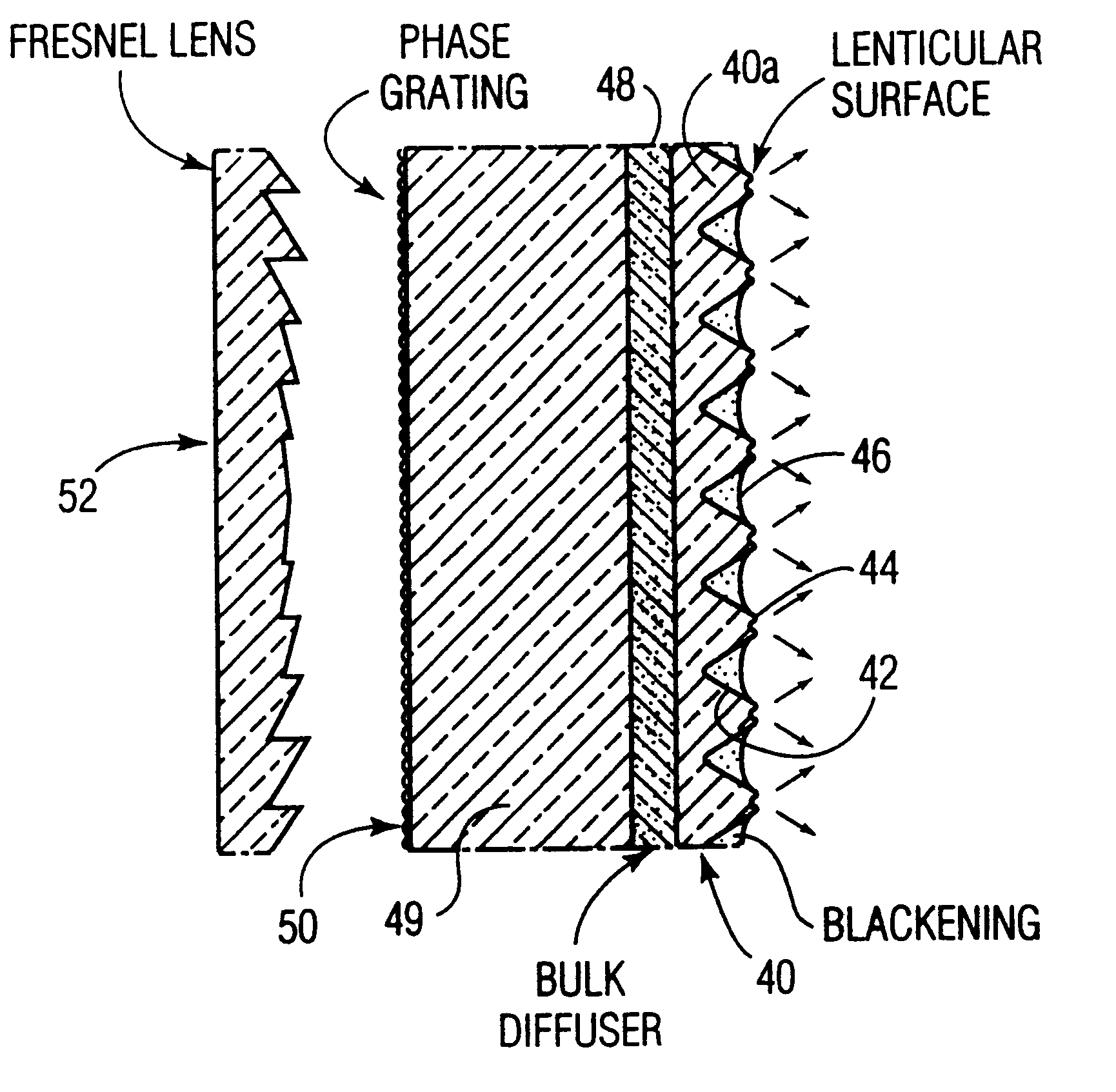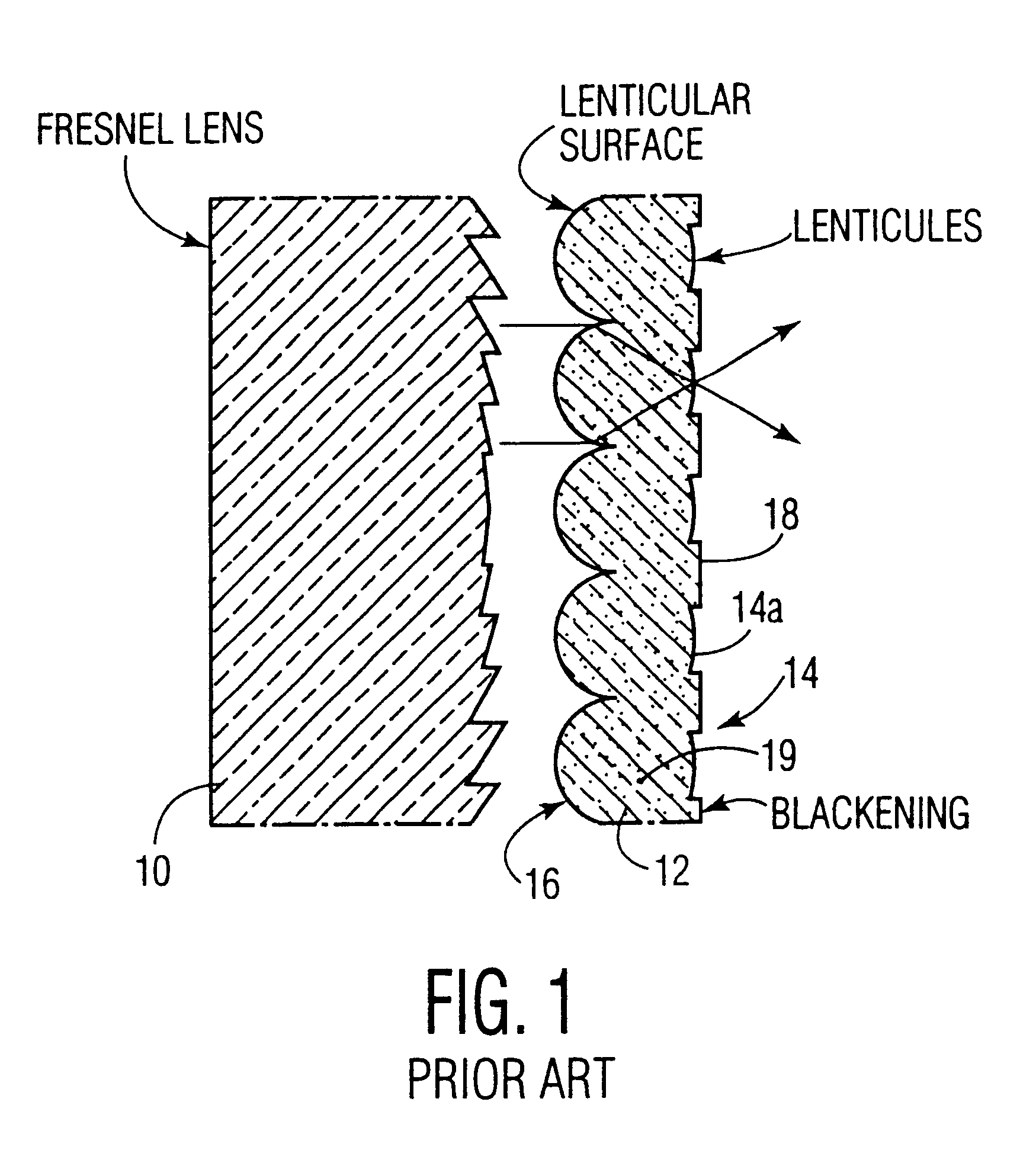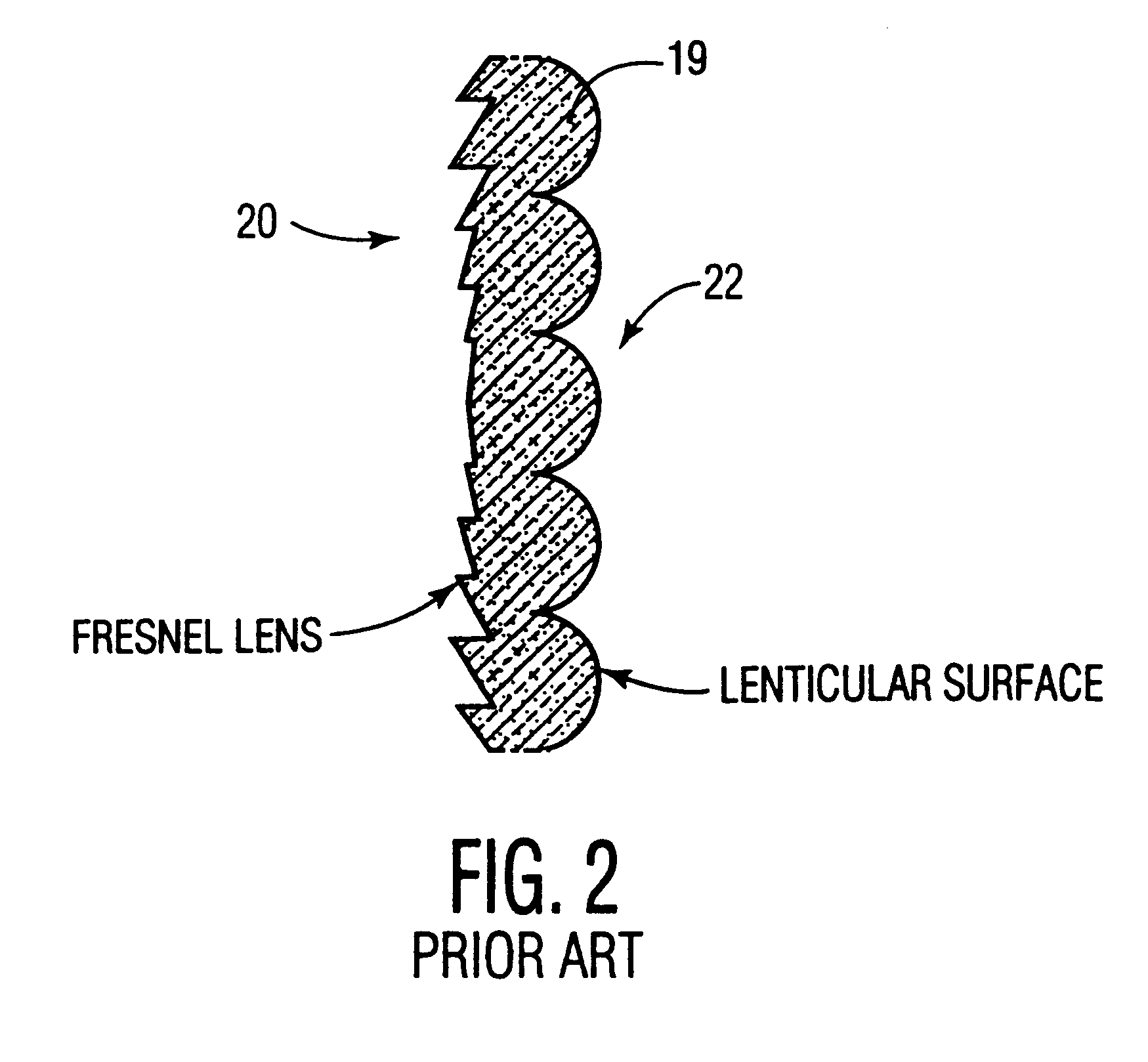Rear projection screen with reduced speckle
a rear projection screen and speckle technology, applied in projectors, optics, instruments, etc., can solve the problems of limited resolution, disturbing artifacts in the form of speckle patterns, and limit the ultimate resolution of the screen, so as to reduce the speckle pattern of the rear projection screen
- Summary
- Abstract
- Description
- Claims
- Application Information
AI Technical Summary
Benefits of technology
Problems solved by technology
Method used
Image
Examples
Embodiment Construction
FIG. 4 shows the preferred embodiment of this invention, a rear projection screen having a front piece or substrate with a front lenticular lens array 40, a bulk diffusing region 48 and a rear surface defining a diffraction grating 50. The front surface is defined by individual mutually parallel lenticular elements or lenticules 40a, each having sidewalls 42 and tip regions 44. As shown, a linear phase grating 50, sometimes referred to as a micro-lenticular or micro lens array, and a bulk diffuser 48 are separated by a clear region 49. The bulk diffuser 48 may also extend into the lenticular region 40 as far as the tip region. The thickness of the clear region or non-diffusing region 49 is typically about 3 mm.
FIG. 9 shows an enlarged portion of the phase grating 50, in which the individual mutually parallel gratings 50a have a cylindrical surface 52, defined by a radius r and a pitch a. The thickness of the substrate and the grating parameters are designed to provide just enough sp...
PUM
 Login to View More
Login to View More Abstract
Description
Claims
Application Information
 Login to View More
Login to View More - R&D
- Intellectual Property
- Life Sciences
- Materials
- Tech Scout
- Unparalleled Data Quality
- Higher Quality Content
- 60% Fewer Hallucinations
Browse by: Latest US Patents, China's latest patents, Technical Efficacy Thesaurus, Application Domain, Technology Topic, Popular Technical Reports.
© 2025 PatSnap. All rights reserved.Legal|Privacy policy|Modern Slavery Act Transparency Statement|Sitemap|About US| Contact US: help@patsnap.com



